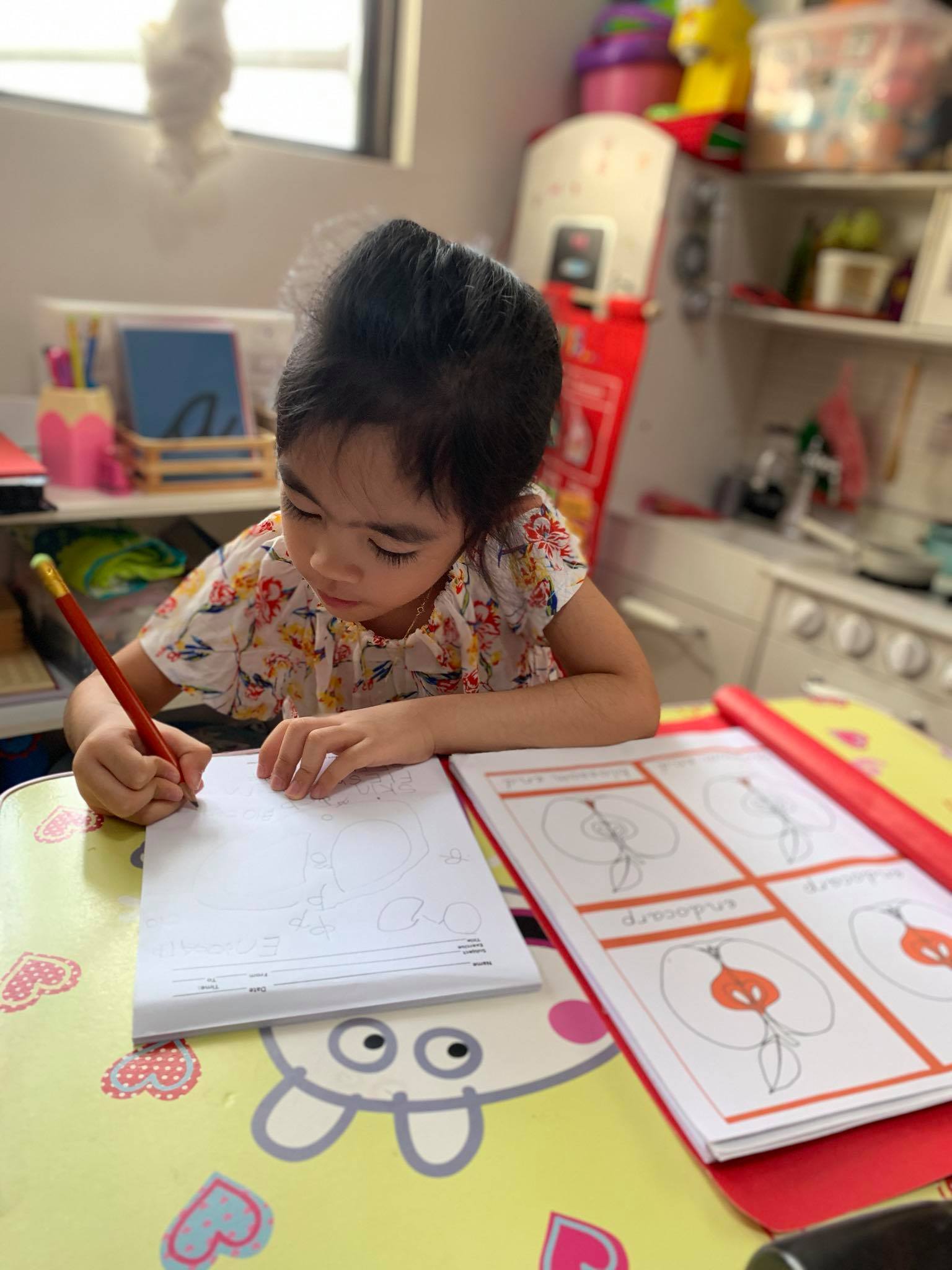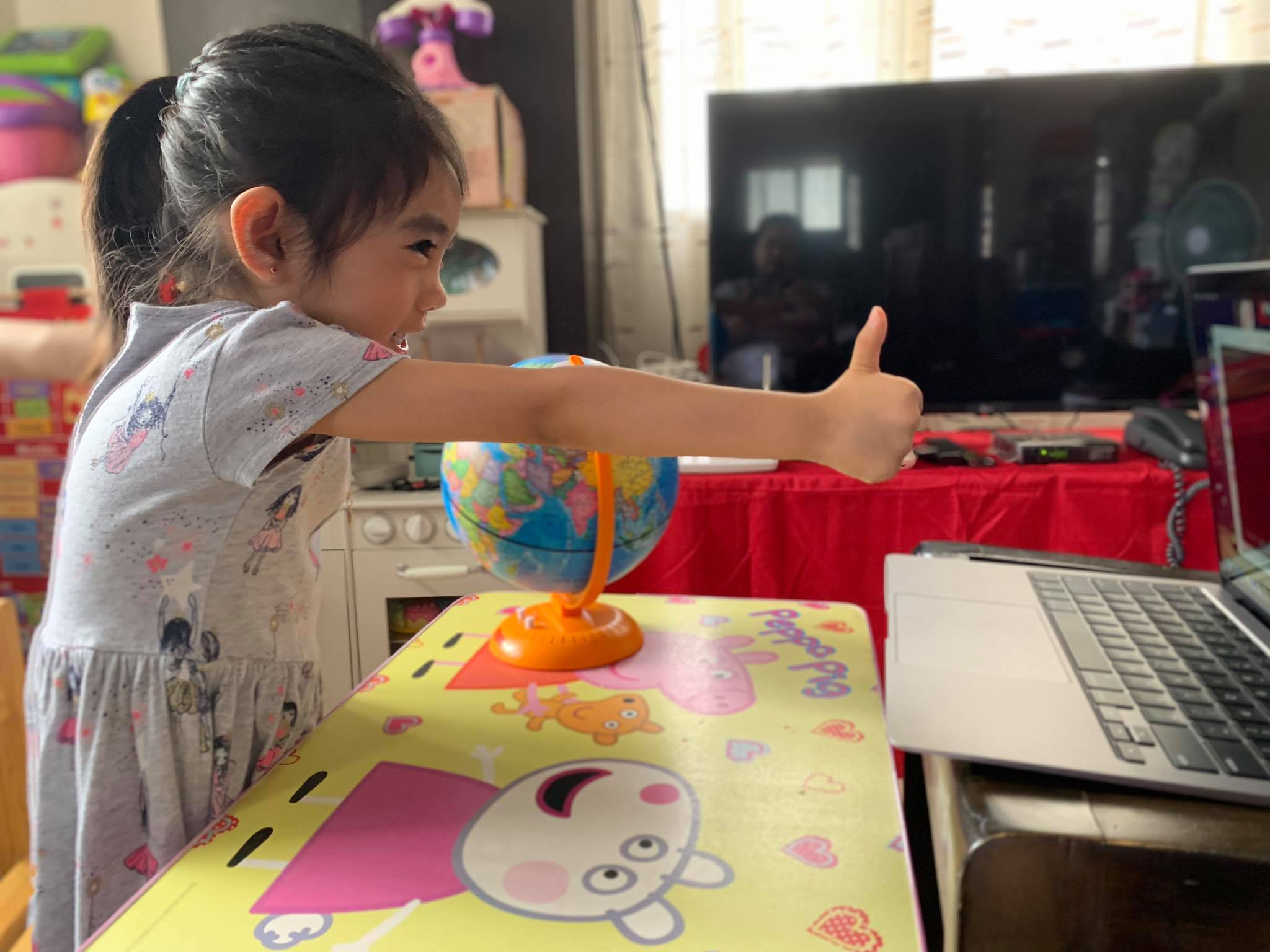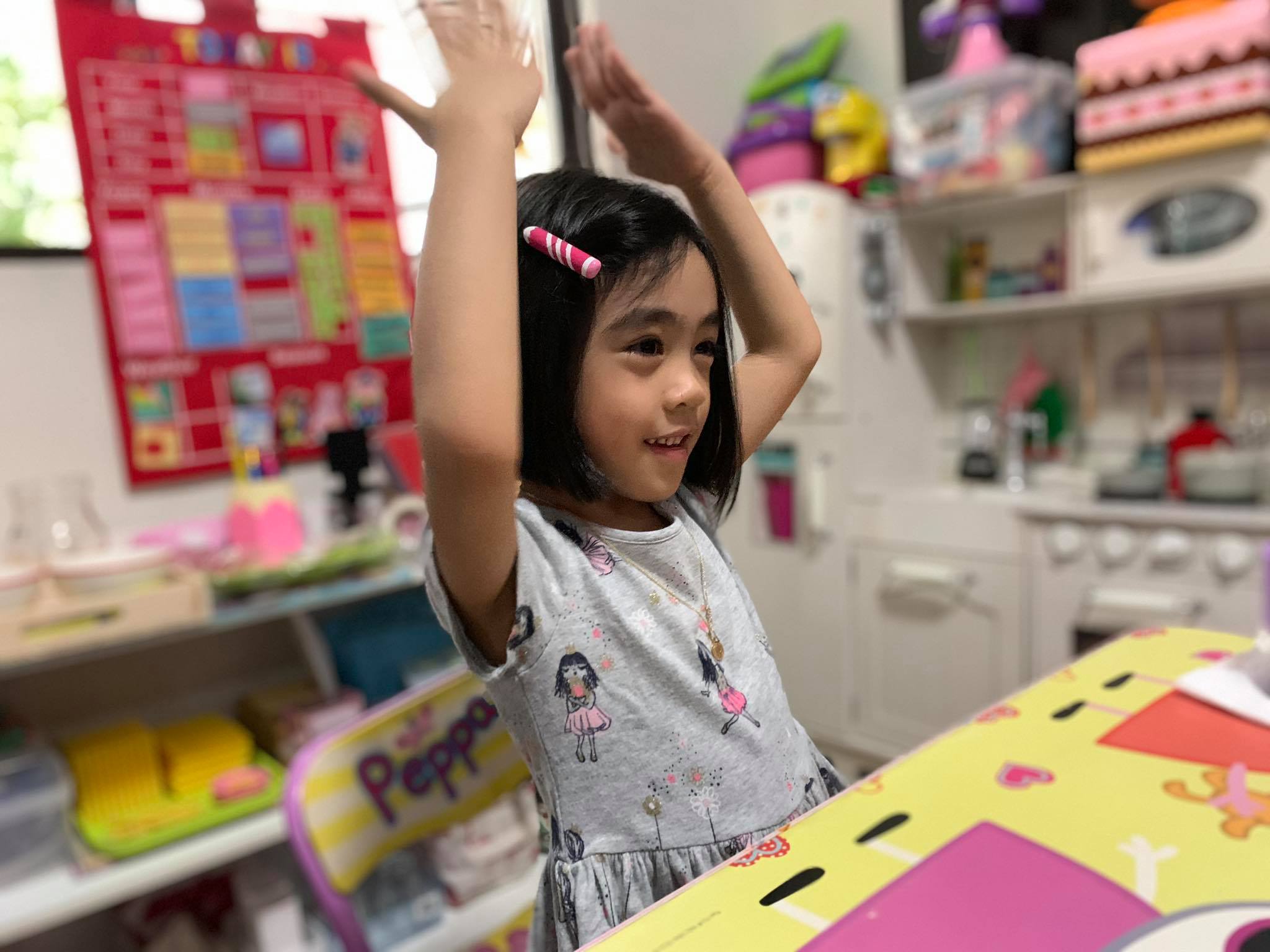Previously, on Mornings with Isay.
Also, I need to pin this here:
(Disclaimer: Let me start off by saying that I had discussed in an earlier post that I recognize my privileged POV when I write about my daughter’s online learning journey. I do understand that what I list as problems may be something others would be willing to go through for the privilege of giving their child an education during these uncertain times. I understand some people have it worse and I am merely chronicling this journey in the hopes that it will somehow help others in its own little way.)
Having gotten that out of the way, here’s the continuation of my journey as a teacher’s assistant for my daughter’s online schooling.
To start off every class week, Ms Martha holds a flag ceremony with the children. For the first few Mondays, that meant my daughter standing straight, staring into the laptop screen with her right hand on her left chest and waiting for the national anthem to finish playing.
I wanted to teach her the words to the song. As a sportswriter who has covered national athletes in major games abroad, I have fallen in love with our national anthem and there are times I actually tear up listening to it. Too dramatic? Not really, if you know the reason.
See, in major international meets like the Asian Games or the Southeast Asian Games, the Philippine national anthem plays during one particular moment of the tournament: When a Filipino wins a gold medal. Knowing the story of hardship of Filipino athletes—plus, you have to admit our national anthem is a beautiful song—triggers this surge of emotion among those who witness gold medal ceremonies.
So I asked Isay: “You want me to teach you how to sing Lupang Hinirang?”
“No. I don’t want,” she said adamantly, the defiance in her tone seemed like I had asked her if she wanted to contract the coronavirus.
About two or three Mondays later, I was surprised she began singing a few lines of Lupang Hinirang.
Right now, she’s made it past the halfway mark and is inching closer to the song’s magical finish. Not only that, in bits and pieces, she asks about the translations and meanings of different lines.
That led me to a realization: There are some things you can teach your children. There are some things they would like to explore on their own. We need to be sensitive enough to detect the difference so we won’t end up being too pushy to the point that it discourages self-learning and interest.

For the things I cannot teach and Isay, my five-year-old daughter, can’t learn on her own, I ask people for help.
People like Dr. Alexie Reyes, founder of yestech.com, a learning platform startup that has been lauded by the Department of Science and Technology and is in the acceleration program of Launchgarage and Silicon Valley Plug and Play.
I had initially brought up a problem that young kindergarten kids will face once it is safe to return to classrooms: Online learning will be so ingrained in their spongy brains that face-to-face learning and interacting with classmates in the flesh will be the new normal.
She agreed, saying that even as we try to normalize the schooling experience for kindergarteners, we must also prep them for a return to campuses.
As far as Isay and her classmates are concerned, there is a daily reminder (thrice a day actually) of how abnormal the situation is. At the start of every class, just before lunch and upon dismissal, a child is called to lead the group in prayer.
And I have become familiar with a sort-of template the children rely on when leading prayers:
“Dear Lord, Thank you for this day. Thank you for our teachers and classmates. Thank you for our parents. Thank you for our (food/pencils/water bottles/plants/pets). And please (take away/kill/create a vaccine for) the coronavirus.”
So yes, that last line guarantees a guardrail that keeps them from falling into an acceptance that what they are going through is the norm.
But the limitations on social interactions are worrying: Children have become comfortable substituting actual expression of emotions (body language/words/facial cues) with emojis in chat boxes. When internet connection gets wobbly, teachers sometimes are forced to rely on hand signals (thumbs up if you understand/agree/are done).

This is why Dr. Reyes, who specializes in early childhood education (even if she has a Masters degree in Liberal Arts from Harvard and a PhD in Educational Administration and Supervision), feels that online learning “must be delivered in three parts.”
“First, the teacher discusses lessons with students with interactions,” said Dr. Reyes. “No. 2, students and parents should help keep track of progress through assignments, tests and a feedback process that the teacher prepared and established.”
“Third, socialization through interactive videos and gamification,” she added. “Students are able to play online games that help them review their lessons and allow them to talk to their peers.”
As parents, we can become a bit obsessive about our child’s progress in Maths, Science and Language/Reading. Isay’s school also pushes practical learning (washing dishes, preparing food, folding clothes) and arts and crafts. But Dr. Reyes says don’t belittle playtime. If you are also doing teacher’s assistant work for your kids at home, take note: Games are important.

“Provide opportunities for the child to play with you or siblings and play those games like hide-and-seek; something physical or some board games like Snakes and Ladders and Candyland,” Dr. Reyes said. “Bonding time with your child through games will definitely contribute to an easier transition for when it is safe for them to go back to face-to-face learning.”
“Through those games, they learn negotiation skills that we experience in the playground; they learn to wait for their turn during board games, celebrate when they win and accept defeat graciously. These are things we learn in school when we are exposed to other kids.”
She also suggests including snack time in the child’s schedule and this is something I do take seriously because my daughter wants to be a chef when she grows up. Snack time also becomes some sort of bonding playtime because I let her help me prepare imaginative meals.
In the next post, I will share some of these playful snacks with you guys.
In the meantime, don’t forget to play with your kids during “school” time at home!

